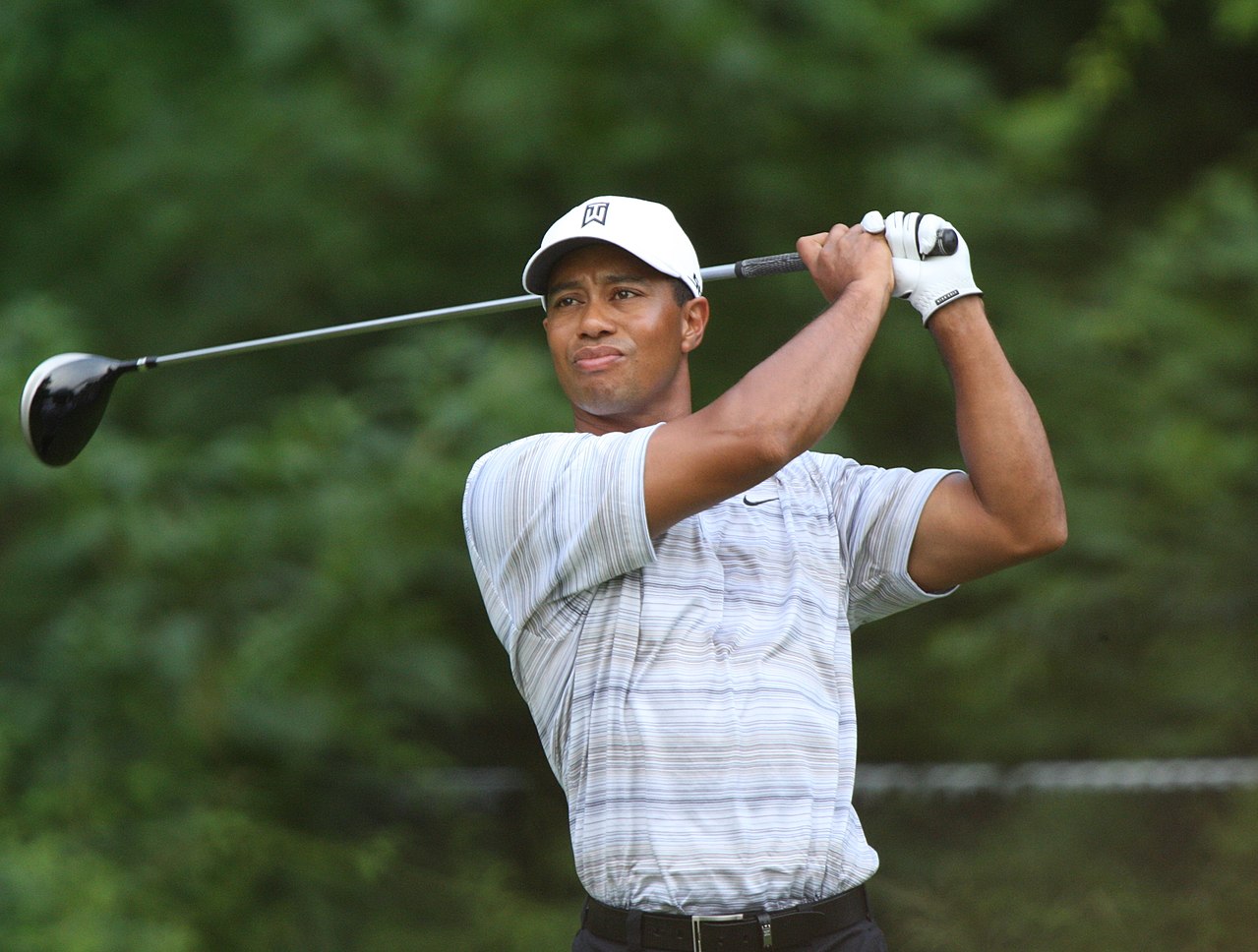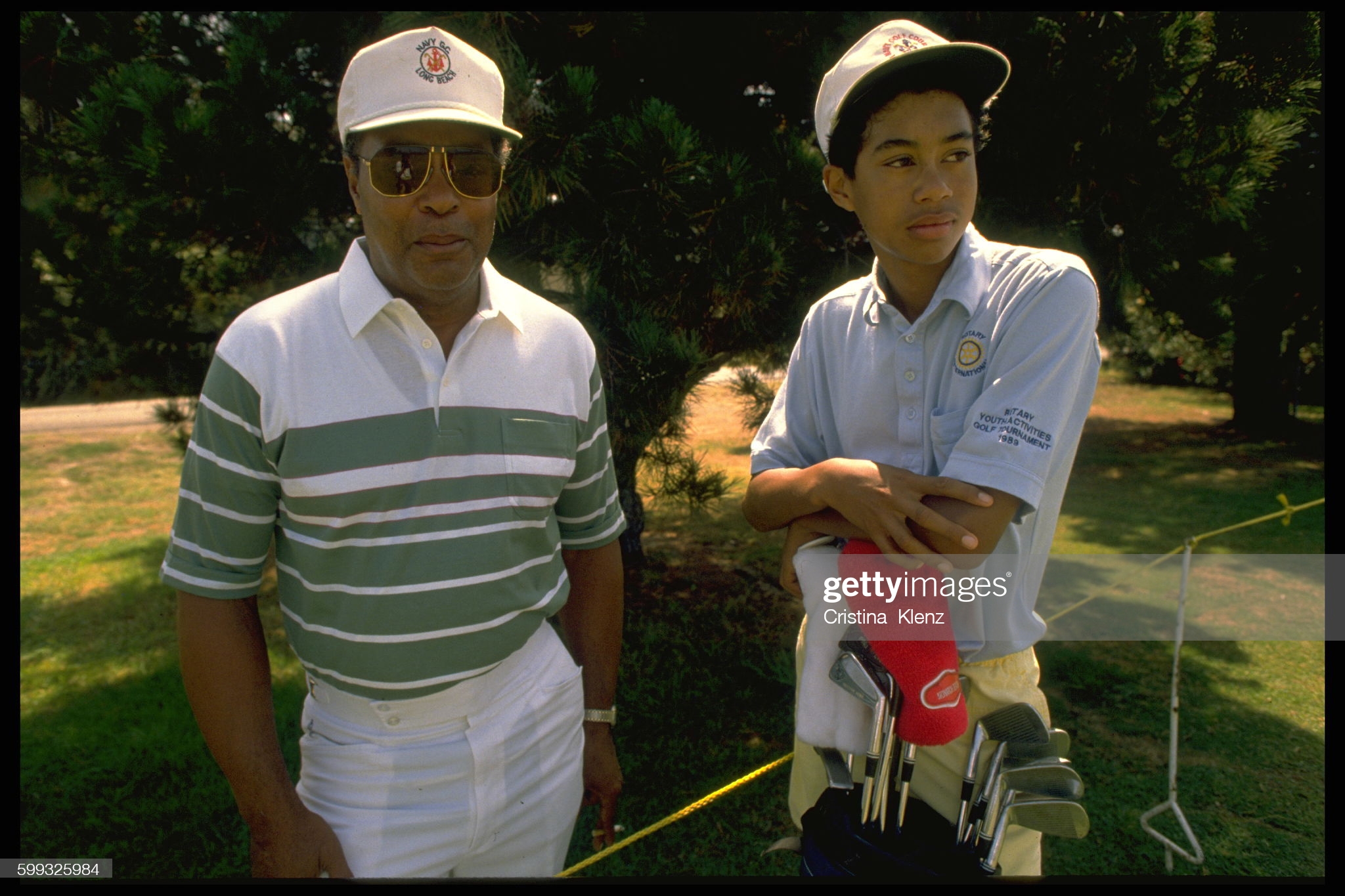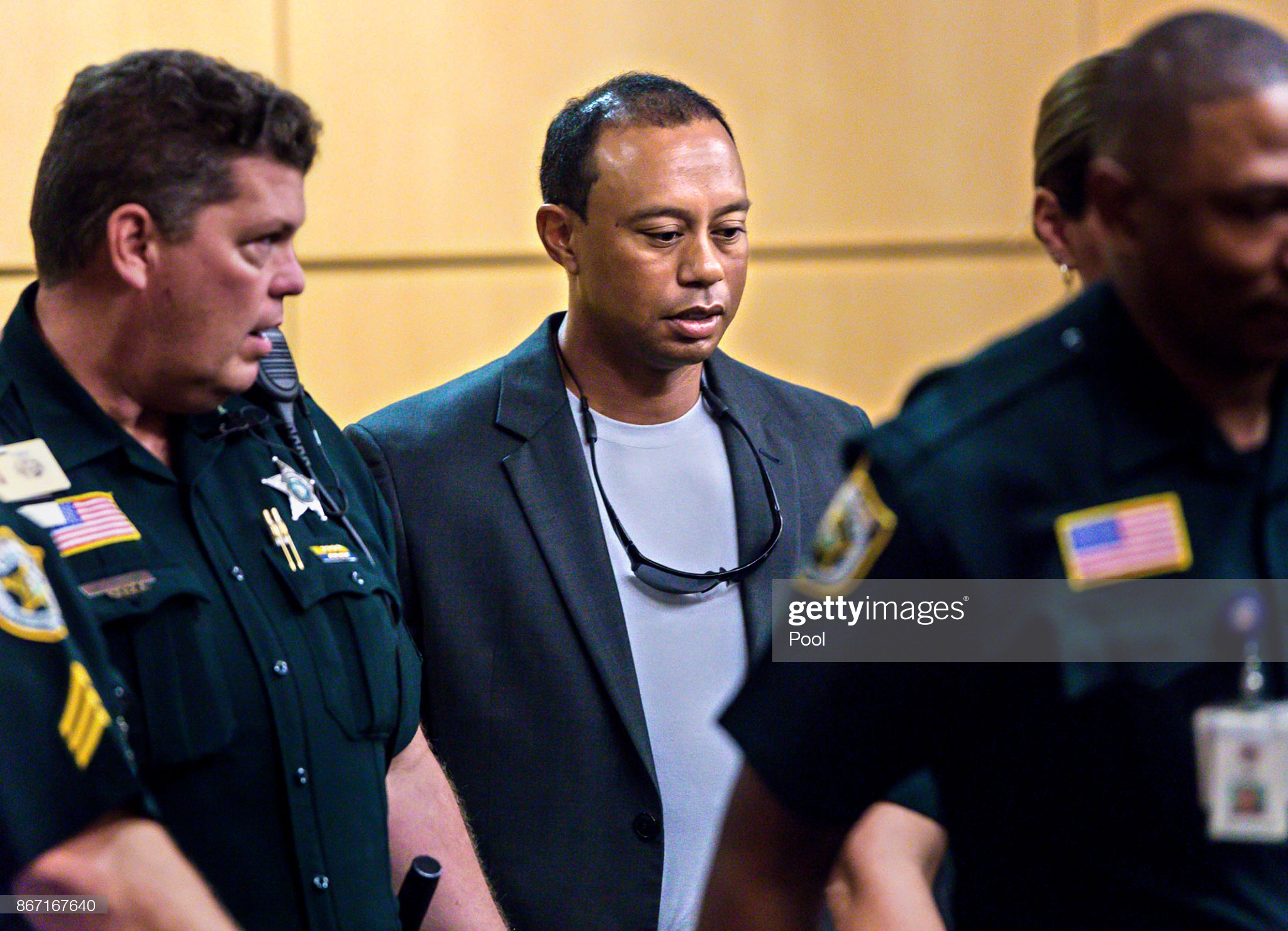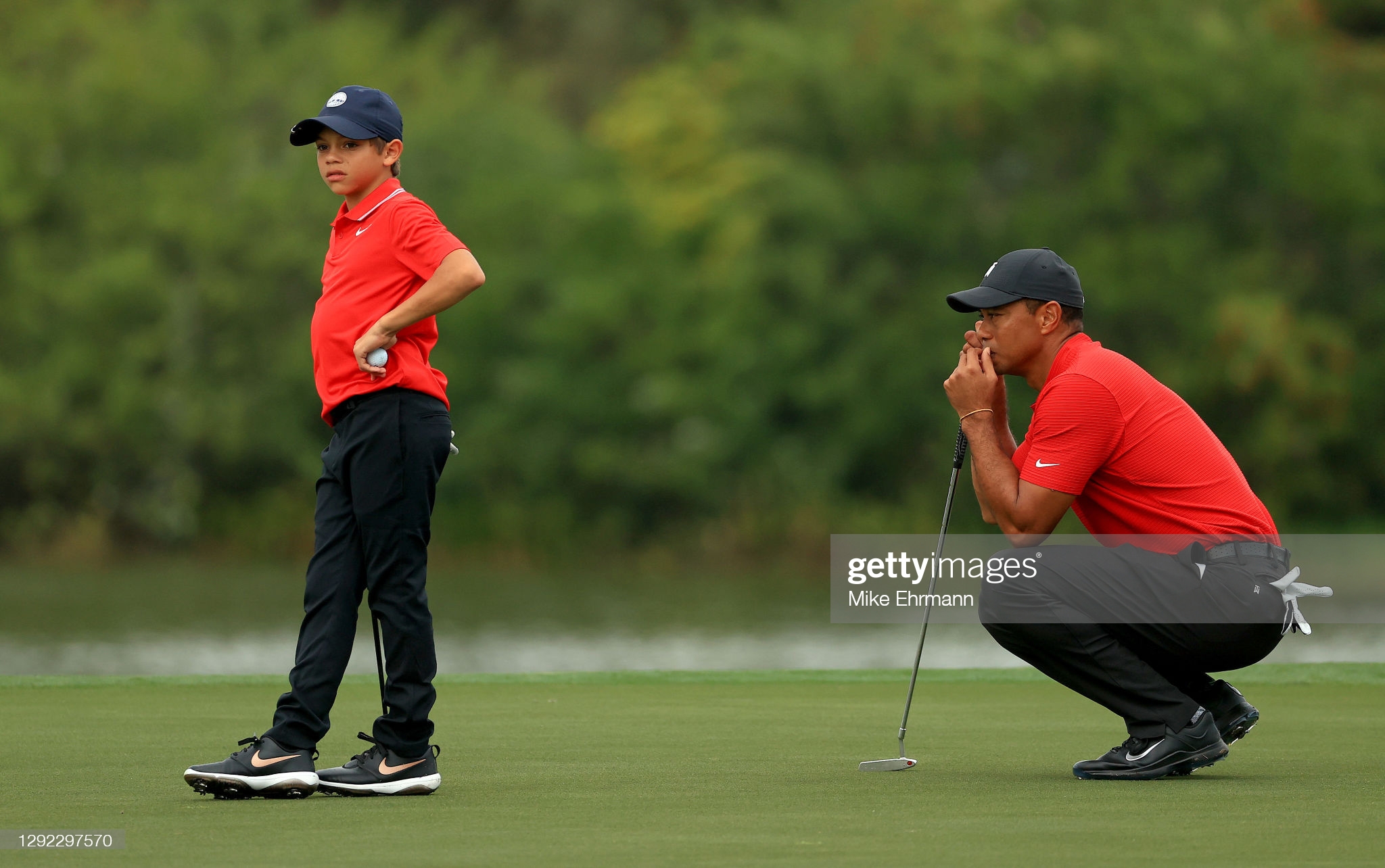Tiger Woods: Human or Machine?

“He will transcend this game and bring to the world a humanitarianism which has never been known before. The world will be a better place to live in by virtue of his existence. This is my treasure, please accept it and use it wisely.”
This is the opening scene from HBO’s new groundbreaking documentary Tiger, as Earl Woods eulogises about his then 20-year-old son, Tiger Woods, at the Haskins Collegiate Awards Banquet in 1996. Meanwhile, video footage simultaneously appears of a 41-year-old Woods stumbling, barefoot and in handcuffs through a Florida police cell.
Tiger is successful at humanising the man behind the headlines with stirring testaments from the people who were around him at the heights of his fame: friends, rivals, journalists and lovers. It portrays the real story about a phenom who was never allowed to be a human being. A generational athlete who was so uncomfortable with fame, he took an intense liking to Navy Seals combat training and scuba-diving.

Creating the Machine
The first myth the two-part documentary sets out to dispel is that the prophet was born and not made. His father and mother, Earl and Kultida were the prodigy’s first makeup artists, meticulously building the competitor, his image and his lore. The opening scenes depict Earl grooming a son who would come to have one singular goal in life: achieving greatness.
Earl bullied and sparred with his son on the golf course for years, raising his voice and shaking the change in his pocket while young Woods eyed his putts. Anything to distract the prodigy at work and prepare him for the pressures of high-level competition. Leveraging his army connections as a former Green Beret, Earl once had a high-grade naval psychoanalyst teach his son how to hypnotise himself at age 13.
The only semblance of a normal teenage life Woods had was with his first girlfriend Dina Parr. Home-video footage shows a young Woods enjoying life, uninhabited by the demands bestowed upon him. Parr, however, did not fit into the Woods masterplan and as a result, she said: “There was all this preparation for golf…but he had no life skills.”
By 1996, the machine was in full operation, as the 20-year-old waltzed to an unprecedented three straight U.S. Amateur titles and turned pro to the echo of Nike’s racially motivated commercial “Hello World.” Woods was aware of the racial undertones that underpinned the sport of golf, but he was never going to be the Mandela-type figure Earl saw him as.
One of my first sporting memories was that of the awe-inspiring Woods demolishing the field in the 1997 US Masters, to which Nick Faldo exclaimed: “We didn’t see him for dust for the next 12 years.”

World Domination and the relentless pursuit of 19
Woods once said: “I’m addicted to golf.”
This addiction also lent itself to making winning a habit, as Woods completed the “Tiger Slam” at the 2001 US Masters. By that time, Tiger’s fame knew no limits and as Esquire’s Charles P. Pierce proclaimed in Tiger: “People invested in him as a figure, something representing what they wanted to believe was good in themselves. It became this hold he had on people’s secret imaginations.”
By the time Woods had married Elin Nordegren in 2004, he had become a sporting idol to many including myself. When you thought of intimidation/inspiration, you thought of Woods.
A year after Woods’ fourth green jacket in 2006, his world was rocked by his father’s death. When you look at the damaged Earl-Tiger relationship in the years before his death, it is only a minuscule part of the story. Earl had invented the legend of Tiger and for Woods, “there was no replacing him and he couldn’t compartmentalise that…I’m not even sure he knew how to grieve,” said close friend Amber Lauria.
Two months later, Woods would win the Open Championship at Royal Liverpool Golf Club with “his pap” watching down. Despite releasing all his emotions on the 18th hole, family friend Pete McDaniel says in Tiger: “It wasn’t over. He suffered from a lot of scars and had an ability to dig something very deep and never think about it again.
“But I believe there is a reckoning and we all have to face it someday.”
Woods’ reckoning was coming.

Mirror, mirror on the wall, we become like our daddy after all…
By 2008, the machine of fame had taken its toll on golf’s phenom and he needed an escape. Woods’ ability to live a double life began in Las Vegas.
Woods had been raised in an atmosphere where adultery was normalised. In one of the most compelling scenes in Tiger, family friend Joe Grohman admits to his own sexual discretions and that of Earl’s, which were regularly exposed to a young Woods.
Earl’s philandering certainly hurt Woods but it did not excuse his behaviour. After the false dawn of the Mindy Lawton fiasco, the 82-time PGA Tour winner was caught in the act in November 2009 in Melbourne with New York club owner Rachel Uchitel, who speaks out for the first time in Tiger.
Woods dealt with his share of public shame after the scandal, some of it unwarranted, including from Billy Payne, chairman of August National who famously chastised him in a press conference pre-2010 Masters. The tirade was characterised by more than one commentator as “a public whipping.” However, Woods’ shame was nothing in comparison to that inflicted on his ex-wife Elin who became an innocent victim in the media frenzy.
One of the least endearing qualities of Woods is his ruthlessness. The way he discarded of close friend Amber Lauria and long-time caddy Steve Williams leaves a bad taste in the mouth.
Williams, in particular, had been there for 13 of his 14 major wins and stood by him even when he realised the contradiction of Woods’ reputation. How could he be the epitome of commitment on the course if he went to extremes to break his body off it? Woods beatdowns at the hands of Navy Seals and parachuting out of aeroplanes are both indistinguishable from his zenith and causes for his downfall.
The following years were marred by debilitating back pain and a rapid decline in his game. Mentally, Woods was destroyed because he had to accept that he was no longer a golfing god but just a man. Leaving golf not being labelled the GOAT must have been untenable as his whole identity had been based around that one goal.
He subsequently became addicted to painkillers, culminating in his DUI arrest of 2017.

Do not underestimate Tiger Woods
After hitting rock bottom, Woods did a lot of soul-searching, which started by looking at his past. Now in his early 40’s, the former world no.1 went through an emotional growth process that for most of us happens when we are young. Woods reevaluated what’s most important in his life and said: “The next thing for me is to be able to share it with my kids. For so long, all my kids knew was my soreness and pain. They’d never seen me win golf tournaments. They don’t know what’s it like.”
The first glimpse of a Woods comeback came at the 2018 Open Championship where he finished tied for sixth before an eye-catching runner-up effort at the PGA Championship. An older yet wiser Woods was all the time building his game towards the 2019 US Masters. The tour pros who had wished to face Woods at his peak would soon find out why this man had dominated one sport for so long. His shot into the par-three 16th, a moment that sent shivers down one’s spine…he’s back.
As Woods made his triumphant walk up the 18th fairway, McDaniel left us with some poignant words: “I knew what to expect: ‘he’s a different man now’…but these were the same people that when he was riding high, they were pulling for him to fall and when he fell, they jumped on him with both feet, and when he rose again, all of a sudden he is a virtuous man. Which to me is bullshit.
“He’s a human being with frailties like the rest of us but we make him out to be more than he is and that goes all the way back to Earl.”
We don’t know if Woods won the Masters because he’d learned from his mistakes, but it did remind me of a poem by Dale Wimbrow: “You can fool many people down the pathway of life, and get pats on the back as you go – But your only reward will be heartbreak and tears if you’ve cheated the man in the glass.”
I like to think that the reflection Woods sees in the mirror now is not one intent on his father’s ideals but something far simpler, and perhaps greater: a man who can begin to let down his guard and allow the world to see a human being, instead of a precious object.